It’s hard to believe that 25 years ago, GM didn’t have a modern crossover utility vehicle. The closest thing in the portfolio was the Chevrolet Tracker, and not only was it body-on-frame, it still featured a two-speed transfer case and a live rear axle. However, it didn’t take long after the new millennium for the first GM crossover to appear, not as a Chevrolet or a GMC or a Pontiac or a Cadillac, but as something from the company’s somewhat experimental subsidiary. I’m talking about the original Saturn Vue, an oft-forgotten machine that was truly groundbreaking for the General.
It all started with what was then a bespoke platform called Theta, a transverse front-engined unibody architecture with packaging protection for all-wheel drive that could accommodate a wide variety of engines. Right from the get-go, Saturn offered one that made sense and one that didn’t. The corporate 2.2-liter Ecotec four-cylinder engine plucked out of the family parts bin was a logical choice. At the time, 143 horsepower and 152 lb.-ft. of torque were respectable numbers for a four-cylinder crossover, right in the ballpark of the Toyota RAV4 and Honda CR-V on power but out-muscling both on torque. The three-liter L81 54-degree V6, on the other hand, probably wasn’t the smartest move. Sure, it already saw duty in the Saturn L Series, but 181 horsepower fell short of the 200 available in the Ford Escape, and sourcing the V6 from England didn’t seem particularly efficient considering Vue production happened in Tennessee.
At the same time, some of the transmission choices were also curious. The standard five-speed manual for four-cylinder models made sense, but the automatic available on the four-bangers was a wretched CVT with a reputation for early resignation. As for the three-liter V6, it came with the relatively sophisticated Aisin AF33 five-speed auto, a transmission employed by the likes of Volvo and Renault.
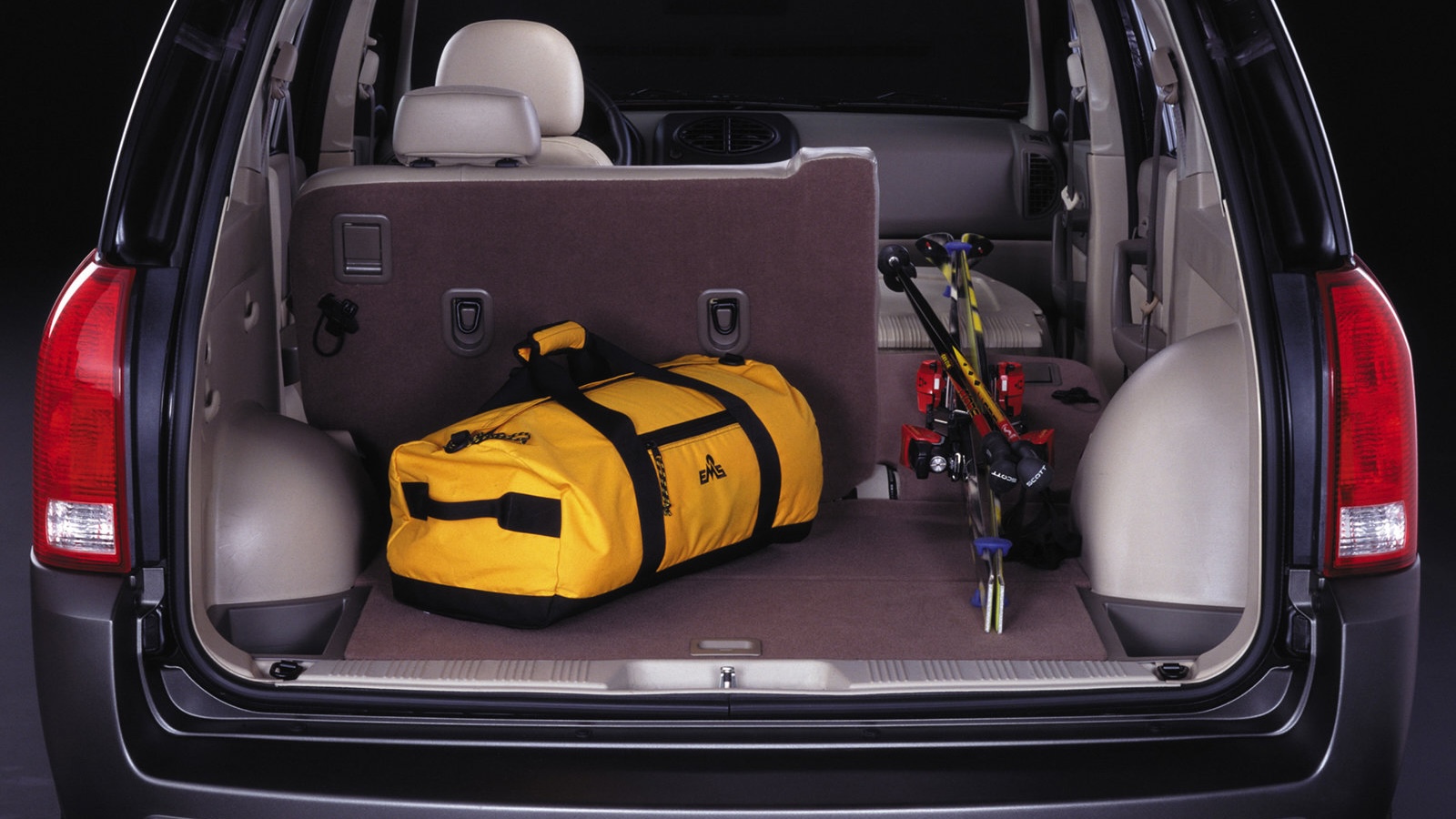
Once the unitary steel space frame was loaded with powertrain components, Saturn wrapped it all up in the brand’s signature plastic panels and gave it some neat little touches. The front passenger seat folded flat for loading of long items, storage bins aft of the rear wheel wells kept gallon jugs secure so drivers wouldn’t spill the milk, window switches on the center console and a two-spoke steering wheel added some quirkiness to the interior, dedicated seat-mounted inboard armrests for the front passengers boosted comfort, and cargo lights in the liftgate just seemed smart.
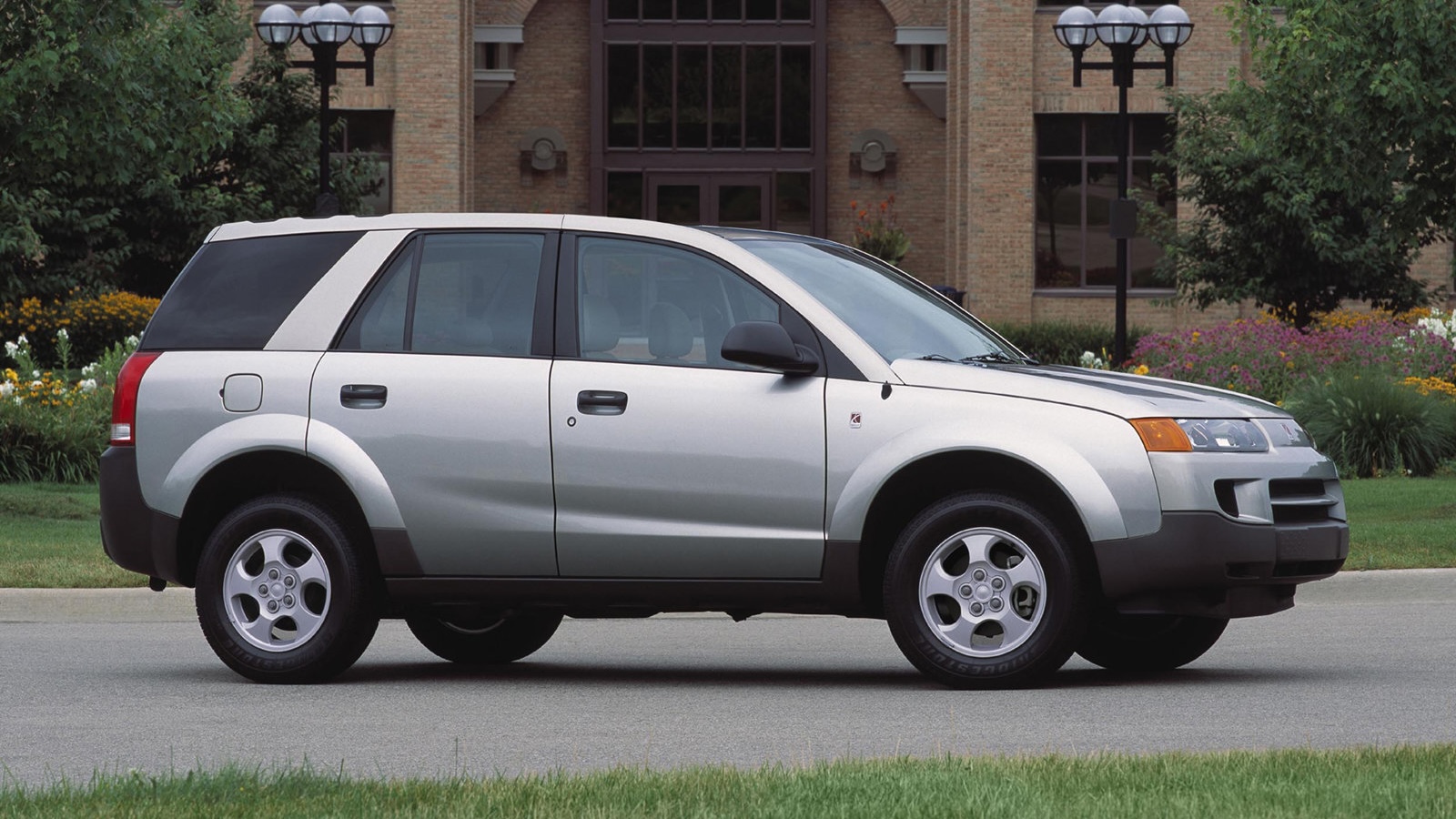
If this all sounds like a competitive package, you’d be right. When Motor Trend first got behind the wheel of a Vue, it came away impressed not just by the physical package of the CUV, but also with its ride quality.
The chassis is wonderfully poised and smooth-riding on a variety of surfaces, including the major pothole we managed to find. Longer than its competitors, the VUE’s spring rates and damping were spot-on for our tastes and give it a larger-than-it-really-is demeanor. Front disc and rear drum brakes seem up to task, although we’ll reserve final judgement until we can actually test the vehicle.
In the context of competitors that still rocked their spare tires on their tailgates, the original Vue was an impressive machine, especially with a starting price under $18,000. As the magazine summed up Saturn’s crossover:
We think the VUE has a bright future with GM. It’s a vehicle that will satisfy thousands of people while costing thousands less than its closest competitors. It offers innovation, content, and performance superior to what’s currently on the market and does so with few compromises.
Given the state of the compact crossover market around the turn of the millennium, Saturn could’ve left it there, but it wasn’t long until the engineers got to tinkering. After a delayed introduction of a front-wheel-drive three-liter V6 model, sights quickly turned towards finding a locally produced V6 engine and automatic transmission. However, instead of going into its own parts bin, the General decided to call up Honda. Yes, Honda. For 2004, the 54-degree GM V6 was out and Honda’s 3.5-liter J35 went in. Output jumped from 181 horsepower to a whopping 250, which transformed the Vue, as Car And Driver found out:
The Vue is no Honda, although it now sounds and accelerates like one. Compared with the weak jabs of last year’s British-built 181-hp, 3.0-liter iron-block V-6, the 250-hp Honda 3.5 delivers a solid right hook. The new Vue’s 7.0-second scoot to 60 mph is a substantial 1.4-second trimming of the old time, and the quarter-mile shrivels from 16.6 seconds at 83 mph to 15.5 at 89. Flat-foot the pedal, and the Vue squats on its buns and lunges like a stink bug in heat. On the freeway it zooms by tractor-trailers as if they were rolling on square wheels.
Suddenly, not only was the V6 Vue the second-speediest thing in the compact crossover segment behind the berserk Subaru Forester XT, it was also dent-resistant machine with Honda reliability and Saturn pricing. Saturn wasn’t about to let the output go unannounced, so it also readied what was arguably the first mass-market performance crossover. Say hello to the Vue Red Line.
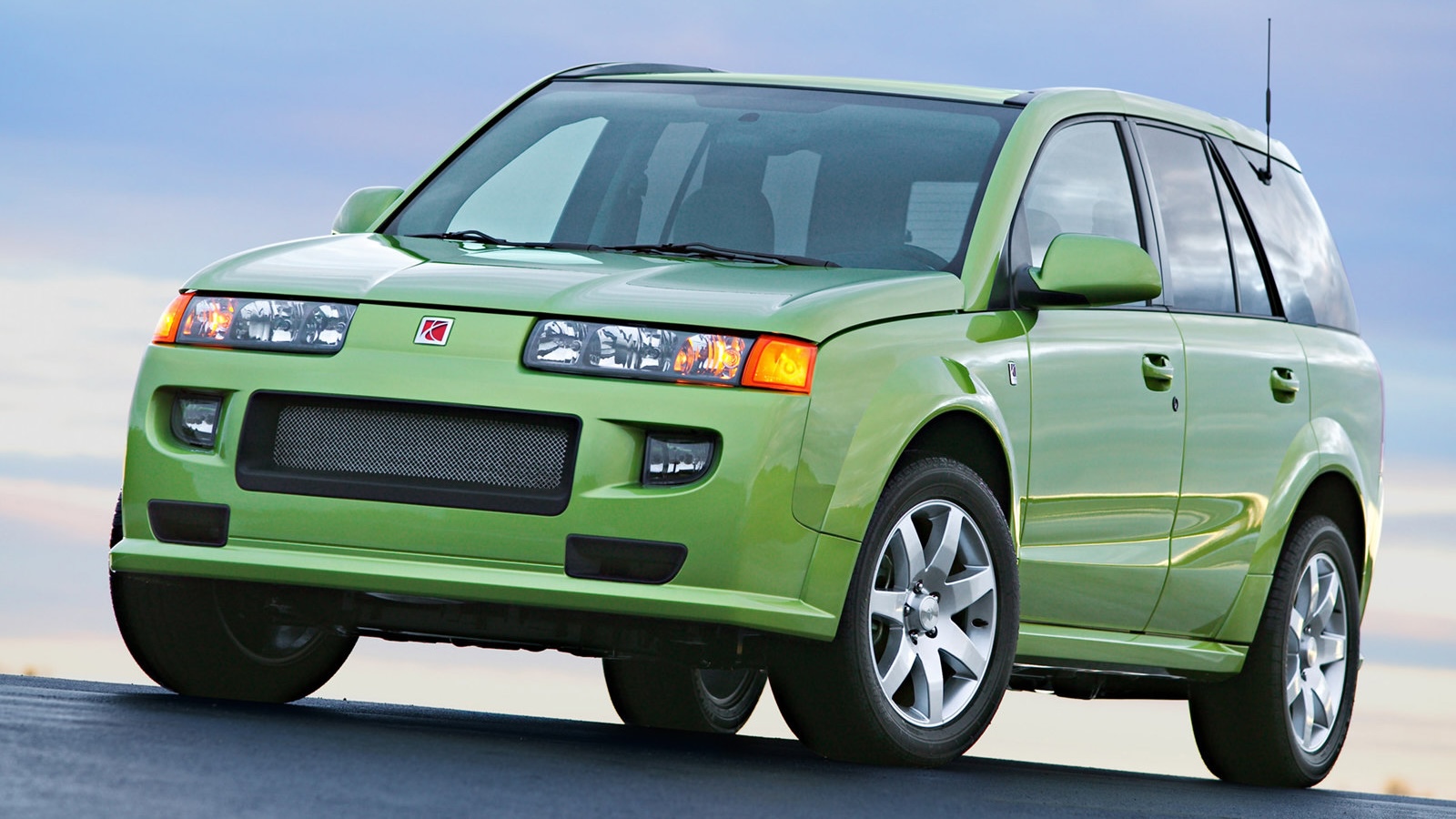
This hunkered-down variant launched in atomic snot green sat an inch lower than a regular Vue, got stiffer suspension, re-tuned steering, 18-inch wheels, and a proper body kit. It’s one of my greatest automotive guilty pleasures because it just looks so 2004 in the best way. The metalcore, edgy racing games, and “EuroTrip” 2004, that is. Also for 2004, the CVT started to be ditched for a regular torque converter automatic. Thank goodness.

For 2006, the Vue got a little bit weird by getting a little more normal. It gained new headlights with a grille between them in a facelift that frankly, wasn’t cohesive with the rest of the car. The updated front end was a little bulbous in the context of the silhouette, but perhaps the most future-forward Vue was just around the corner. The 2007 model year saw the launch of the Vue Green Line, a 36-volt mild hybrid model with a 2.4-liter four-cylinder engine that offered 26 more horsepower than the non-hybridized four-cylinder and a 23.8 percent combined fuel economy improvement. It was a step towards the future, and while it wasn’t as advanced as the series-parallel Ford Escape Hybrid, it was ahead of the curve on mild hybrid adoption.
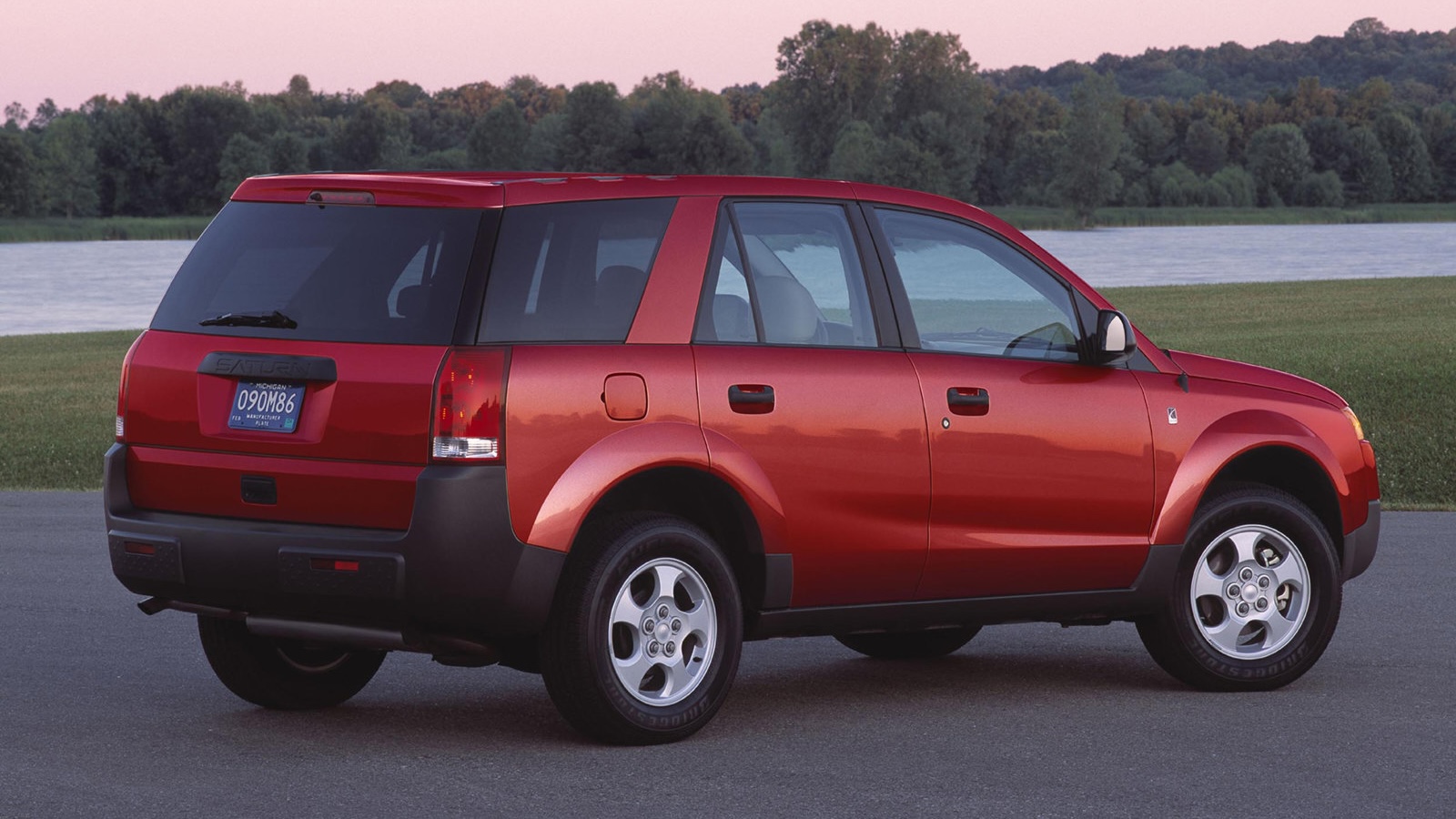
The first-generation Saturn Vue was absolutely a hit, aside from the early CVT. The Chevrolet Equinox didn’t show up until three years into its production run, by which point the Vue had evolved into the sleeper hit of the crossover segment, adding nicer interior appointments as it went. It was a case of a GM divison trying something new and absolutely succeeding. In 25 years, GM went from building its first modern crossover to building pretty much nothing but body-on-frame trucks and SUVs, performance cars, and crossovers. How’s that for a pivot?
Top graphic image: Saturn
Support our mission of championing car culture by becoming an Official Autopian Member.

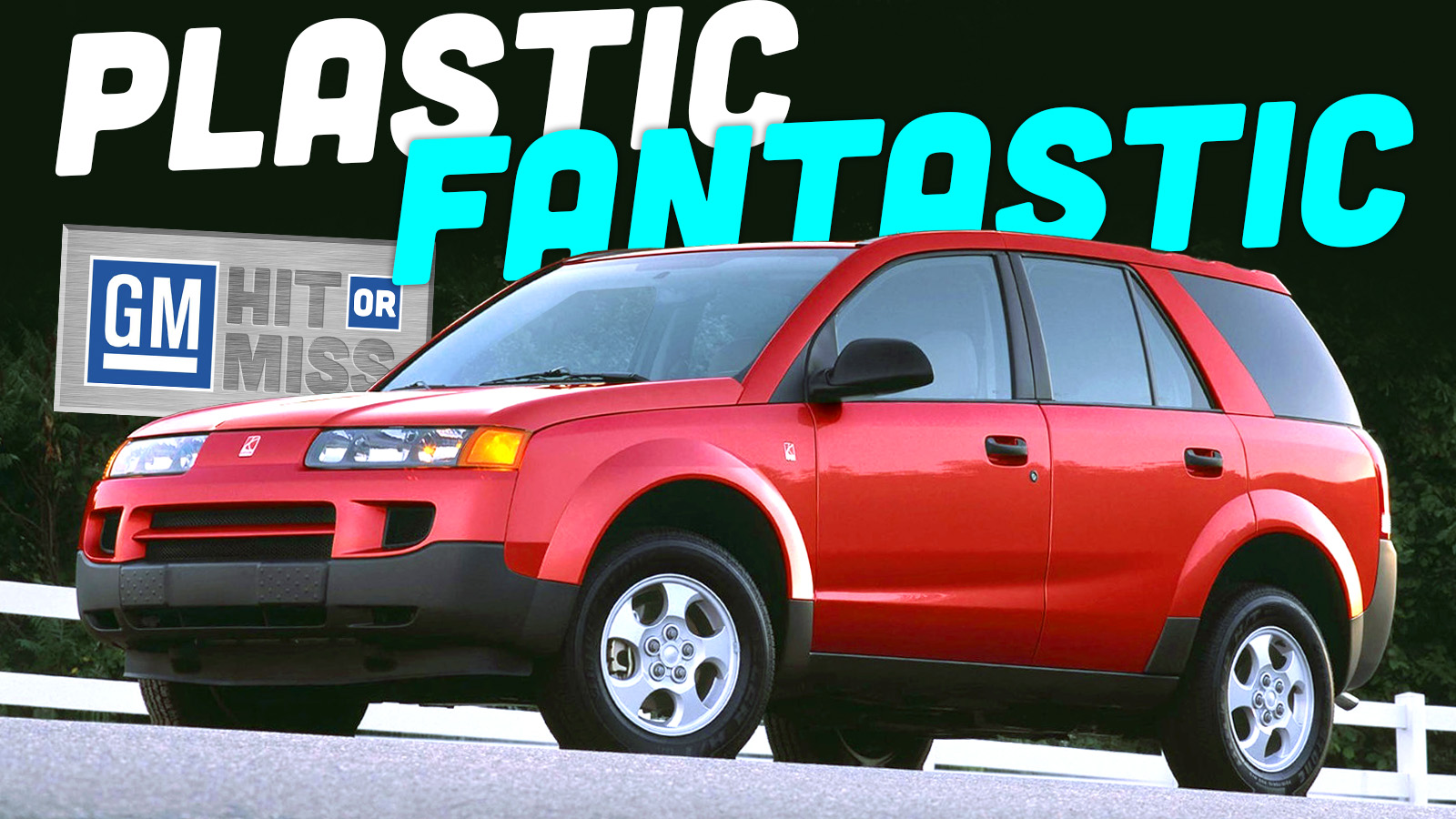



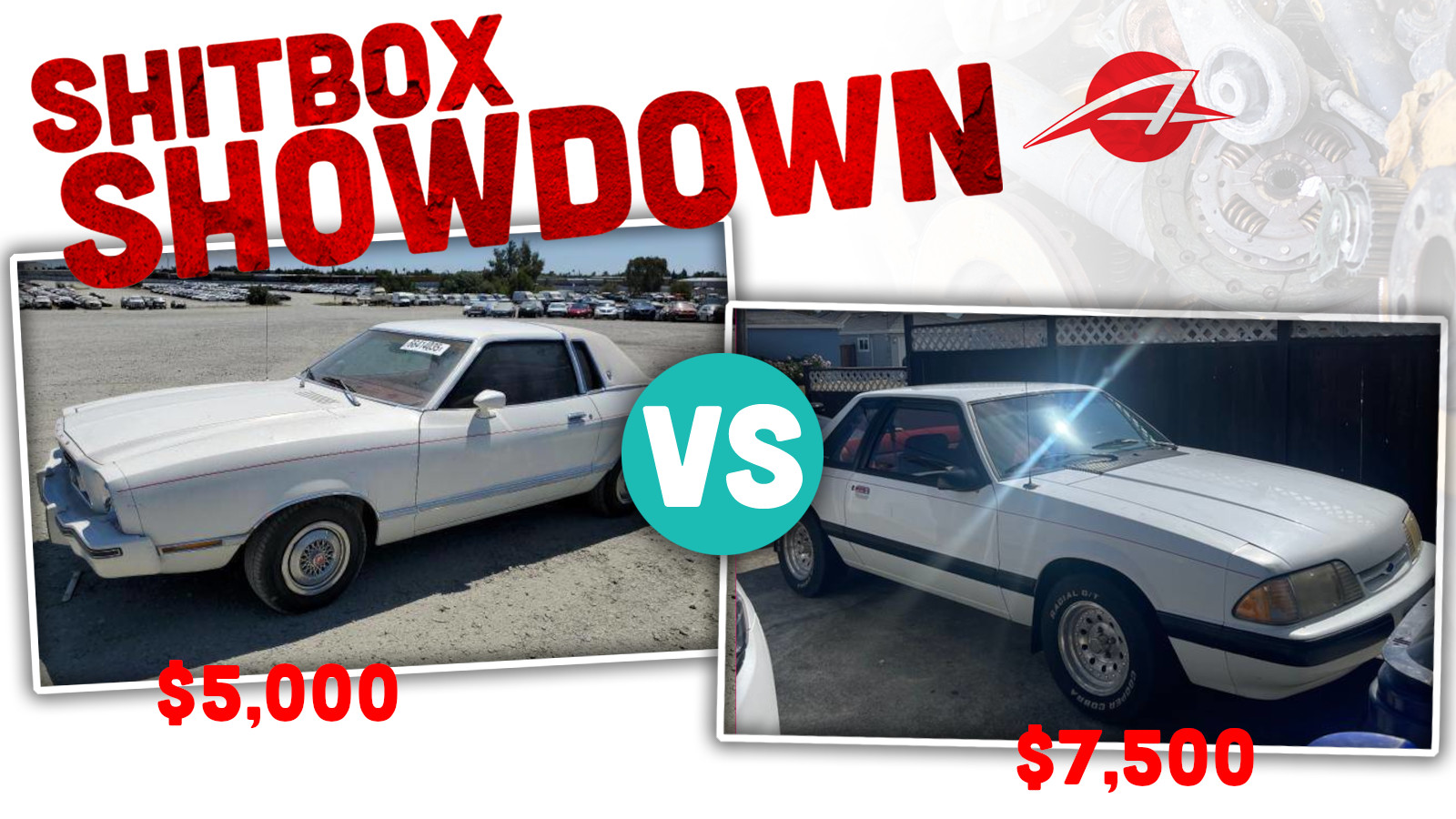
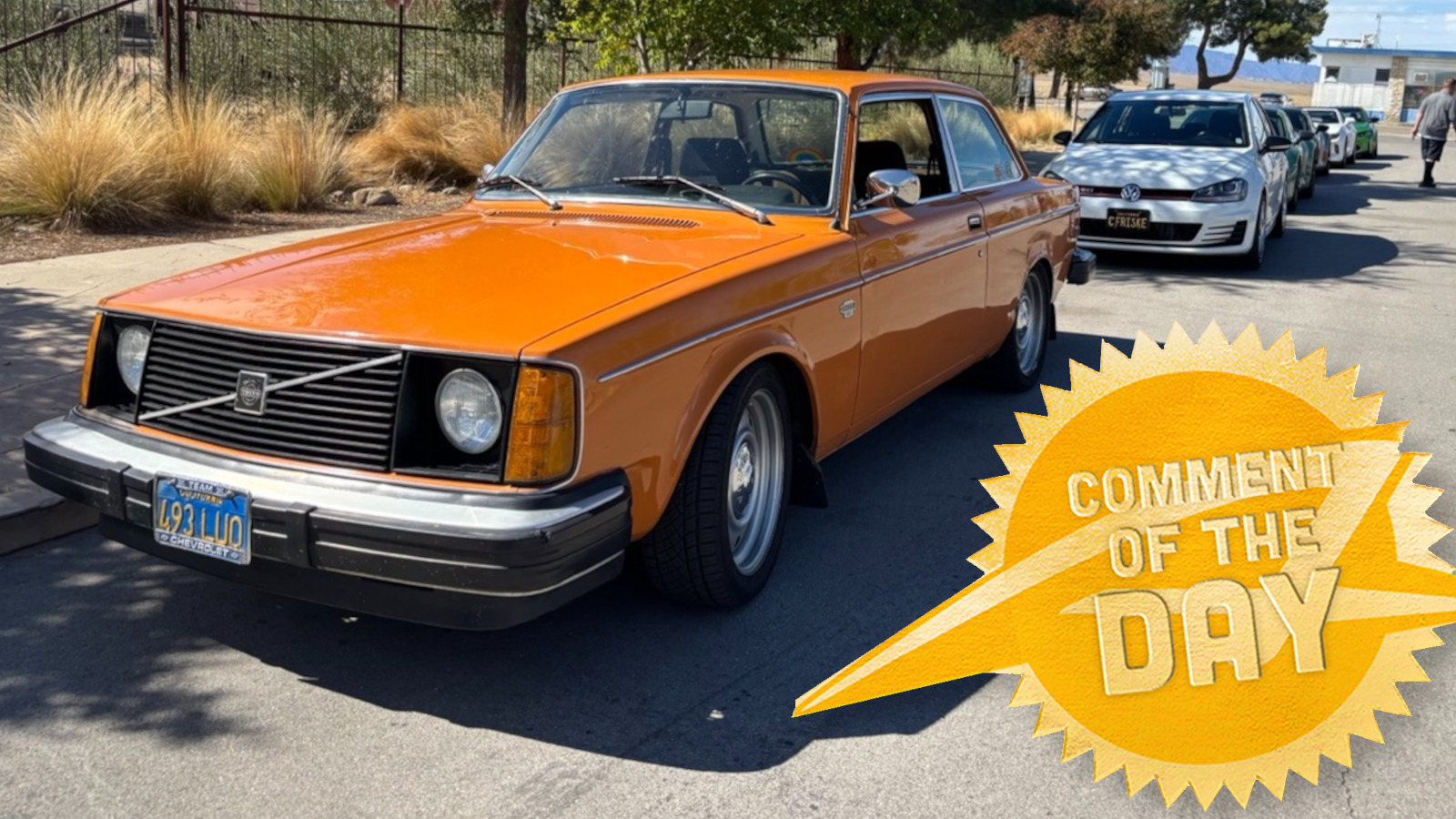
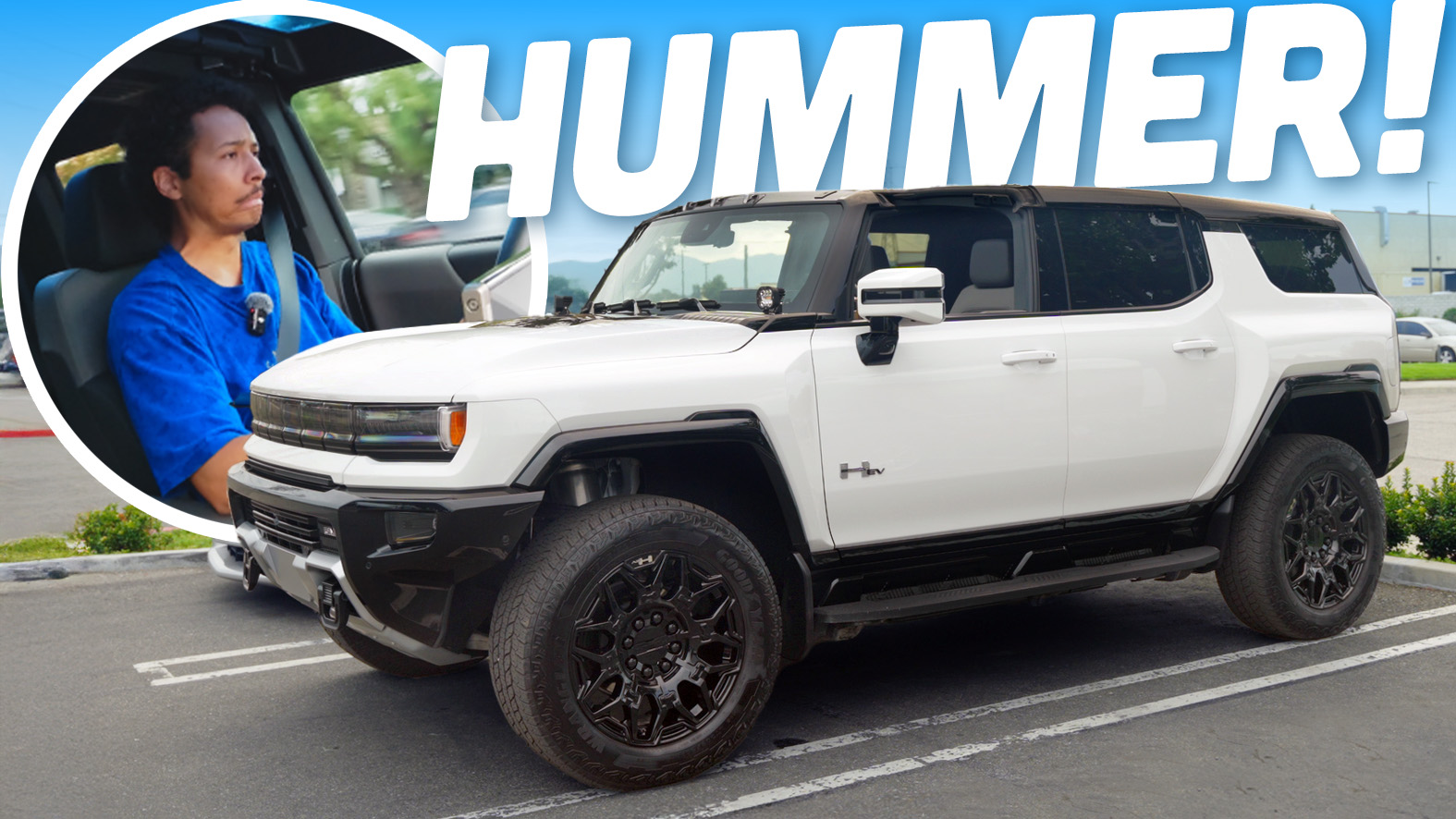
My folks had a Vue with the Honda V6. Effortless power. I love a Honda V6. They did have a transmission problem, but I feel like that was a circumstantial one with towing without having done a proper servicing on it in awhile. But they did have an issue with the heated passenger seat and the airbag sensor they never really did investigate while they had it.
The J35/5AT was part of a deal GM struck with Honda, in which GM agreed to purchase 50,000 units. In exchange, Honda got the use of some Isuzu (then 49% owned by GM) diesel engine packages for use in Europe. I believe there were plans to use the J35/5AT in other domestic GM cars, too. I could see a world in which the G6 and/or Aura received it.
It wasn’t the first collaboration between GM and Honda…or the last. Honda currently sells the Acura ZDX and Honda Prologue EVs, both of which are GM Ultium vehicles and are close relatives to the Cadillac Lyriq and Chevrolet Blazer EV.
Loved the Vue. We didn’t have a ton of Saturns in our area until a dealer finally opened up (which was beloved by many) probably around 2002. They were extremely successful at moving the Vue, I wouldn’t go so far as to say they were everywhere, but for Saturn I would call it a major success (locally). You still see a number of them, presumably all with the V6 or a manual, because that CVT was utter shit.
The VUE was definitely a right car/right time model for GM, and for Saturn. Seemed like a lot of S owners wouldn’t look at an ION but were open to a VUE, but that may have been helped by the bargain pricing on early ones, with Sport Plus packages that weren’t on the official brochures but paired power features, moonroof, and manual for basically the base MSRP.
My family had a 2005 2.2/4AT that got around fine. For 2005 the GM 4AT replaced the VTi in FWDs, and a small number of I4/AWDs with the VTi were made presumably to use up stock. After that there was no AWD I4 option, which is strange to think about now that AWD is standard on so many crossovers.
04-05 had some noticeable improvements inside over the 02-03, but the 06-07 facelift got a new interior that was a bigger improvement yet, in that 2000s Lutz-era way.
I owned a 2003 VUE, 2.2 and manual. Great car. We drove it 135000 miles a day 12 years before selling it to a friend. It was our first family car, then a commuter after we outgrew it. In some ways, I wish I had kept it for one of my kids. As the article indicates, great interior layout, including a fold-out box in the back for groceries. It fit 3 car seats in the back, which few non-giant cars did. It got excellent mileage, and was reliable after a few hiccups in the first year.
135K miles a day is quite an accomplishment! Assuming you scaled back a bit on weekends, that’s more than 420 million miles in 12 years. Not enough to get to Saturn, but more than halfway there when Earth and Saturn are at their closest.
Damn autocorrect. 135k total.
We had a new red 2004 Vue with the Honda V6. Although I loved the looks, and bought it because of the Honda engine. But the interior was cheap plastics, it was drafty in the winter, and the engine/exhaust system mooed at cruising speeds in the city. We dumped it after less than 2 years. It’s the last GM we’ve owned.
10-year-old me loved the Saturn Vue. I’m not sure why.
The presence of the Honda V6 was proof of just how bad GM’s engine options were in prior to the bankruptcy. The push-rod sixes were clearly not the way forward but GM was forced to install a Chinese-market engine in the early Equinox (I’m pretty sure Chevy would not have allowed a Honda mill) and by 2006 had finally had something from Holden to sell. By this time, though, Toyota and others had started offering V6s in the small SUVs and the small advantage offered by early crossovers like the Vue melted away.
The other strange thing about the Equinox was that it was an updated 3400, when the “High Value” 3500 had already been out for a year in the Malibu.
The DOHC 3.6 had started showing up at the same time but had to do a few years at Cadillac (and the Buick Rendezvous Ultra) to build some cachet before trickling down. The Equinox/Torrent offered it in sport trims the same time the 2nd-gen VUE arrived with it. By then as you mentioned the RAV4 had already been on the scene with the 3.5 V6, and it was much lighter and thus quicker too.
After that the horsepower wars of the 2000s started to wane, the standard fours had improved, and then gas prices had rocketed up as the recession got under way.
I had an 04 V6 in Blue for a few years. It was such a sleeper. I had wanted to get a stick one, but the wife decided at the last minute that she wanted an automatic, so I went for the V6. That was the right move vs. the automatic 4, because that had the garbage CVT in it (I’m pretty sure that stuck around until 2005). The other interesting parts bin item the V6 got over the 4 was the very nice steering wheel from the CTS.
I remember that steering wheel. All of the RWD Cadillacs used it: CTS, STS, SRX and XLR.
My relative’s 2006 STS-V has it.
I absolutely adore the Vue and have always felt it was one of the best looking SUVs of the decade; and it must have been extremely embarrassing to the rest of GM that it actually had a good V6 engine under the hood.
However:
I’d say the closest thing to a crossover GM had would have been the crossover Aztek that Pontiac already had on the market the year prior.
Yes, definitely, alongside the Rendezvous, which was basically the same except for a longer wheelbase.
And somehow, much less attractive.
Lost my virginity in the back of one of these. Hell yeah.
COTD material right here.
This is a strangely applicable article, Thomas: I had a ’99 Tracker 4dr, an ’03 Vue with the 3.0-liter/AT, and an ’07 Vue with the Honda J35/AT. 🙂
I don’t remember too much about the ’03 Vue, but the 3.0-liter six was an improvement over the 2.0-liter four in the Tracker, so I was all right with it. The Tracker’s live axle was a PITA when making turns on wet roads, primarily because the OEM Uniroyal (?!?!) tires were craptacular: even with the modest power output it would still spin the inside rear wheel. The transfer case was fun, though the only times I used it were for test purposes.
The J35 was fantastic – no notes. Fun fact: with the front passenger seat folded down, the ’07 would carry 2’x8′ plywood, MDF, etc. – with the liftgate shut and without interfering with the shifter or anything. I don’t know if that was intentional but it was really handy.
However, the ’07 was around long enough to die of rust. It was no longer safe to drive and had to be decommissioned.
I had a friend with a Redline Vue as the family hauler, I drove it once in a rush; and it was surprisingly capable. It was nicer than I expected from a Saturn of the day. Sadly most of them around here are pretty beat these days.
This is my memory of them as well – better and more capable than one would expect of a Saturn. The Vue was good, and the Redline better, though the refresh in 2007 was definitely a step backwards in the looks department.
I believe the cvt was an more expensive option then a standard automatic and sold along side. The cvts were manufactured in turkey and seawater was getting in the cases. I knew of several that got lemon lawed because of cvt failure upon failure. Allegedly Honda wanted the cvt and traded engines for the cvt design. Not sure how true but it was talked about frequently in 03 / 04. I’ve had a few of them they are fairly junky on the inside but the panels were really great. It’s amazing when you go to sell them how many people won’t believe the 4 cyl is a GM and not a Honda.
Honda already had years of experience with CVTs at that point, but there was talk of getting diesels from GM in a swap. Honda had been using Rover diesels during that partnership and didn’t yet have one of their own for Europe. I believe an Opel/Isuzu diesel made its way into the 7th gen Euro Civic (the one we saw as an Si hatch) for a time and later Honda had their own diesels.
They also licensed OnStar, which was seen in some Acuras, but that’s comparatively minor.
I’ve heard the diesel swap story maybe some credence but Honda had a long relationship with Isuzu at that point. Honda was interested in cvts and had experience gm had a whole program that seemingly ended with lots of material science and engineering. Honda could gleem some information from good or bad. The actual design of the Saturn CVT was allegedly good it just came down to manufacturing and shipping problems. GM obviously spent alot of time and money to figure that out also probably worth something to a global company like Honda. That’s why I’ve always thought it plausible more so then the diesel that they could source from their buddies at Isuzu.
Perhaps the CVT got thrown in too, the press release said it was a V6-for-diesel swap though. The diesel arm wasn’t solely Isuzu but a venture with GM who had a controlling interest so they wouldn’t have been able to sneak them out the back door to Honda. Even the Isuzu/Honda partnership, GM wasn’t far away for, since the Rodeo and Trooper had Opel/Vauxhall/Holden variants around the globe.
I want to say I heard a rumor years ago that the VTi design was something Fiat had worked on for years and couldn’t get right and GM explored it when they began their partnership, but couldn’t even begin to think where I saw it, maybe a passing post on a forum.
Dmax power aka Duramax is Isuzu and gm in the us but isuzu has its own diesels and other partners for diesel elsewhere. I believe dmax also serves as an importer for Isuzu industrial diesel engines used in things like generations, air compressors, and other heavy equipment.
There is that Italian power train design and manufacturing company vm motri or something like that that was owned by Detroit them GM and Fiat for a while then completely fiat I believe that’s where the vti team up talk came from. Those partnerships often have various teams from both companies working with engineers of the partner company sometimes engineers will be assigned to the partnership company. Different thinking and more of a free flow of ideas often fixing things that were stuck. Just like the vortec 4200 is mainly an Isuzu design but gm had people also working on it. Produced it and probably had a bigger hand in modifying it.
The mom of the girl I dated through most of high school had the first year of one of these. I remember thinking it was really cheap feeling, but a solid vehicle. They got it solely because their SL1 (that they still had, and for some reason had a pile of melted Crayola crayons on the rear parcel shelf) was such a trouble free experience.
It was a terrific appliance vehicle.
Cheap feeling, but a solid appliance describes a lot of non-Opel Saturns
It was. I owned a used 2003 with the 5 spd for almost 4 years. It was so reliable, thrifty and practical I could forgive the scratchy plastics, wide panel gaps and the tinniest dash padding I have seen to date
“the Chevrolet Tracker, and even though it was unibody”
Are we sure about this? I’m 99% sure it had a full frame.
https://share.google/images/aIKAmYmHF7OhdAyNW
According to this guy it is body-on-frame:
https://www.theautopian.com/i-just-bought-a-rust-free-manual-chevy-tracker-4×4-for-700-but-it-doesnt-run-and-is-filled-with-mouse-crap/
Well, at least he achieved the life goals in the first sentence of that article.
I had a Suzuki Grand Vitara, which is the vehicle the tracker was based off of, and it was definitely a full ladder frame on those.
Yeah, I was going to comment on that. How dare you insult the glorious Chevy Tracker that way‽
I really miss small SUVs like the Tracker with “a two-speed transfer case and a live rear axle”.
Suzuki Jimny says hello
Not to many in my area to buy, no Suzuki dealers, no Jimnys on lots and Samurais have long rejoined the earth as rust. I would love one but no spare change to import one and I would want a left hand drive one in addition.
How about old Suzuki Sidekick/Vitara / Geo Trackers?
More daily-drivable than Samarai, and with slightly more that haven’t rusted out yet?
0 available in my area. we use road salt 6 months/year. I see none on CL/FBM or other for sale websites.
Yeah, that’s not really surprising, unfortunately. I’m also in a salt area, and I was casually looking for them for years before I found one in decent shape locally. At least you can find them in less salty parts of the continent!
I saw a guy driving a newish Mexican Jimny in San Diego last week! Reminded me of bombing around in my buddy’s stick shift open top Samurai in the 90’s.
This makes me miss Saturn (not the rebadged Saturn, but this weird Saturn).
Agreed. When GM finally does something right, they always abandon it and bury it in the ground. It was their only brand worth shopping back in the day.
Their current products are junk. I recently had a ’24 Malibu as a rental and it had zero character. The transmission and steering provided zero feedback to the driver and the engine had the drone of a high-strung weed whacker.
Plastic on the outside with rust behind
Hey, I’ll take that over rust on everything.